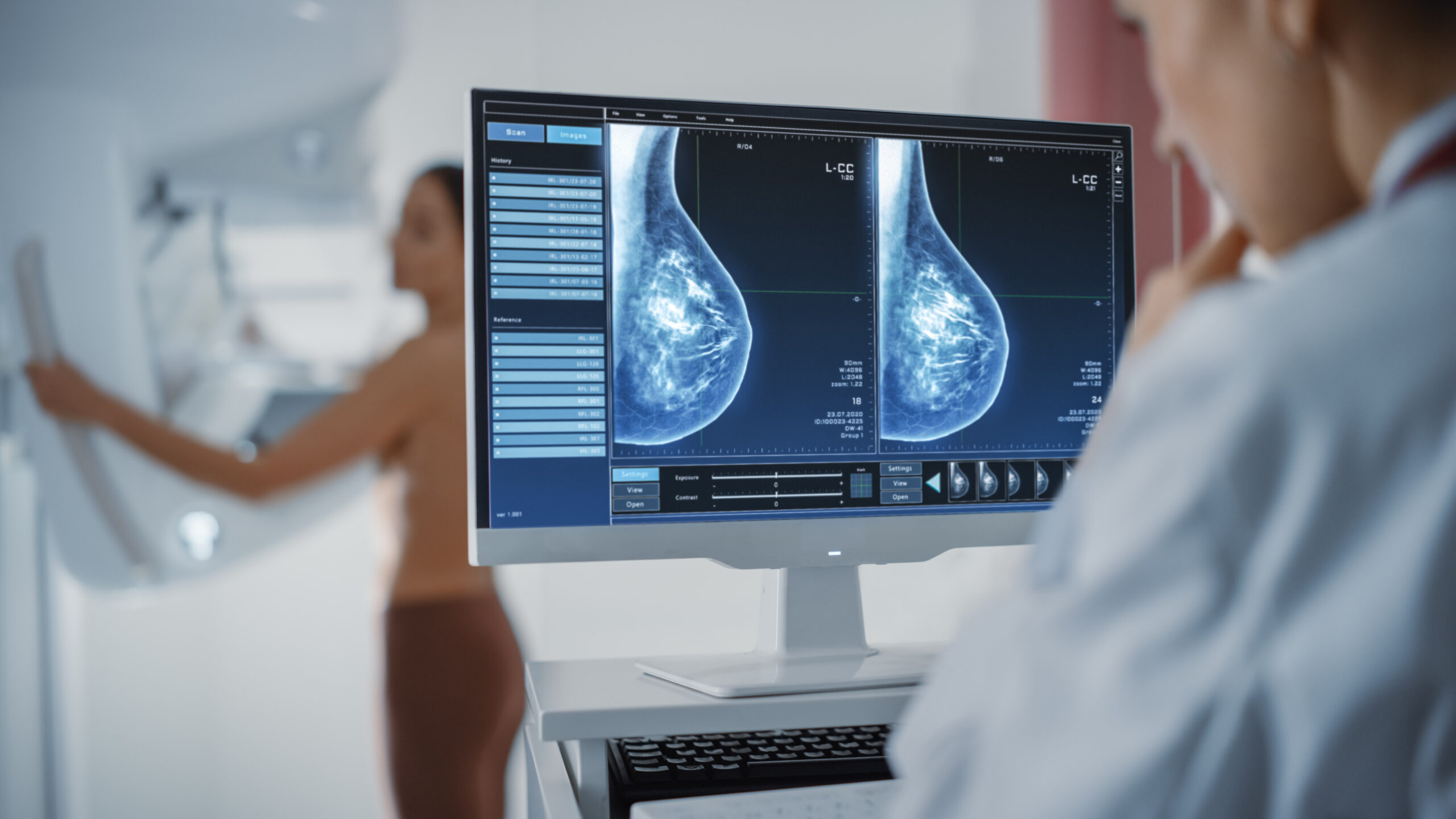After having your annual screening mammogram, you may be called back for an additional imaging exam called a diagnostic mammogram so the radiologist can take a closer look at an area of concern seen in the initial mammogram. You may be wondering why you need another mammogram, what to expect, what more imaging might show, and most of all, whether the need for another test means you have breast cancer.
It’s normal to feel anxious about being called back for a diagnostic mammogram, but educating yourself about the exam may help calm some of your fears.
First, some reassurance: Being asked to return for another mammogram doesn’t mean you have breast cancer. For every 1,000 women screened, approximately 90 will be called back for additional diagnostic imaging, and fewer than three will be found to have breast cancer.
Let’s dig into diagnostic mammography to help you better understand what to expect from the exam.
What Is a Diagnostic Mammogram?
A 3D diagnostic mammogram is a digital X-ray of the breast that captures high-resolution images from multiple angles to provide more detailed breast imaging. The goal of a diagnostic mammogram is to take more pictures of breast tissue changes or abnormalities that appeared in your screening mammogram images. With additional images, your radiologist can take a closer look at potential areas of concern and provide more information to your primary care doctor or gynecologist.
Based on the findings, your doctor will then decide whether you need additional types of breast imaging or a biopsy to determine if it’s cancerous. Most diagnostic mammogram results do not indicate cancer, but if an abnormality is found, early-stage detection often provides more treatment options with reduced surgery and better outcomes. Women whose breast cancer was diagnosed at stage 0 or stage 1 have a nearly 100% five-year survival rate.
Why Would You Need a Diagnostic Mammogram?
Your radiologist may want to perform a diagnostic mammogram to evaluate certain areas of your breast tissue that looked different from the rest in screening, although not necessarily suspicious for cancer. Another common reason for a call-back is if the radiologist saw an abnormality in your mammogram images that warrants a closer look. Examples of suspicious findings include:
- Calcifications — areas of calcium buildup that look like white spots in imaging
- Masses — an abnormal area of tissue that may be solid (more likely to be cancer) or fluid-filled (more likely to be a noncancerous cyst)
If you have symptoms that could be due to breast cancer, your doctor may want to have a diagnostic mammogram to investigate further. Potential breast cancer symptoms include:
- A new lump or thickening in the armpit or breast
- Changes in breast shape or size
- Dimpling or puckering of the skin
- Newly inverted or retracted nipple
- Nipple discharge
- Skin color changes
Finally, your doctor may recommend a diagnostic mammogram if you’re at higher risk for breast cancer. Some risk factors for developing breast cancer include:
- A personal or family history of breast cancer or ovarian cancer
- Certain inherited genetic changes, such as mutations in the BRCA1 or BRCA 2 genes
- Dense breast tissue
- Early menstrual periods (before age 12)
- Higher body mass index
- Late menopause (after age 55)
- Previous radiation therapy to the chest
- Use of birth control
- Use of hormone therapy
Screening Mammography vs. Diagnostic Mammography
You may be wondering about the difference between screening mammography and diagnostic mammography. Both types of mammograms utilize X-ray technology, with Windsong Radiology offering advanced 3D mammography for more precise breast imaging. This type of mammography allows radiologists to combine cross-sectional image slices into 3D pictures of the breast.
Annual screening mammography remains the gold standard for early breast cancer detection, allowing for earlier intervention and improved survival rates. If you’re at average risk of breast cancer, you should have your first annual screening mammogram at age 40. Your doctor may recommend starting earlier if you’re at higher risk.
Key differences between screening and diagnostic mammograms include:
- Duration: A screening mammogram usually takes around 15 minutes, but a diagnostic mammogram may take longer because it includes more images.
- Insurance coverage: Most insurances cover routine annual screening mammograms 100%. However, insurance coverage may vary for diagnostic mammography, and you may be expected to pay out-of-pocket for partial payment.
- Number of images: The technologist will take more images during a diagnostic mammogram so the radiologist can get a detailed look at suspicious areas.
- Physician order: Your primary care or OBGYN physician will need to order the diagnostic mammogram to allow the radiologist to conduct additional studies as needed (for example, using ultrasound to probe an area of concern further).
- Timing: You’ll have a screening mammogram first followed by a diagnostic mammogram, if needed.
What to Expect
You won’t notice much difference between the diagnostic mammography process and the screening mammography process, except your diagnostic mammogram appointment may take a bit longer. Prepare for your appointment just as you would for a screening mammogram. Don’t apply deodorant or lotion and wear a top you can easily remove.
During your diagnostic mammogram, the technologist will briefly compress each breast. While this may cause brief discomfort, it is typically not painful and lasts only a few seconds per image. Remember, you’ll need to hold still so the machine can take the most accurate pictures. Your mammography technologist will walk you through each step of the exam and work to ensure your comfort.
Results and Next Steps
After completing your diagnostic mammogram, the radiologist will either meet with you or follow up by phone to discuss your results. You will also receive a letter with your results in the mail, and the findings will be available in your patient portal. Your referring doctor will receive a copy of your mammogram report to discuss with you and determine any next steps.
Mammogram results are calculated using the Breast Imaging Reporting and Data System (BI-RADS), which rates the findings on a scale of zero to six. As the ratings get higher, the numbers signal a greater chance that cancer may be present and may require a breast tissue sample for diagnosis.
Depending on the results, you may need to:
- Continue your normal annual screening mammogram schedule if your diagnostic mammogram shows no concerns
- Have additional tests, such as a breast ultrasound or breast MRI, or more frequent mammograms
- Have a breast biopsy to help determine whether a mass is cancerous
No matter what your diagnostic mammogram results show, you can take comfort in knowing that you went the extra mile for your breast health and can move forward with more confidence.







